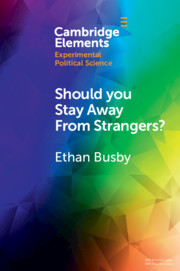Element contents
Should You Stay Away from Strangers?
Published online by Cambridge University Press: 13 March 2021
Summary
- Type
- Element
- Information
- Online ISBN: 9781108957885Publisher: Cambridge University PressPrint publication: 01 April 2021
References
- 10
- Cited by

